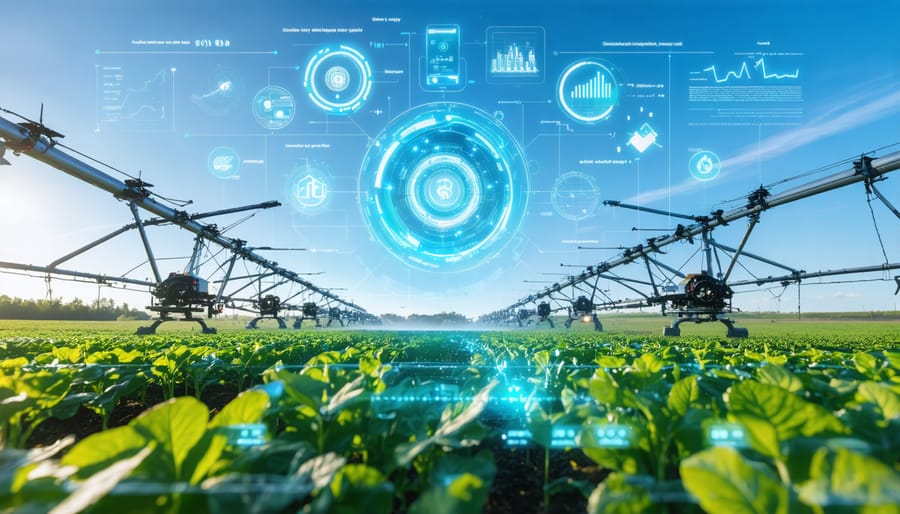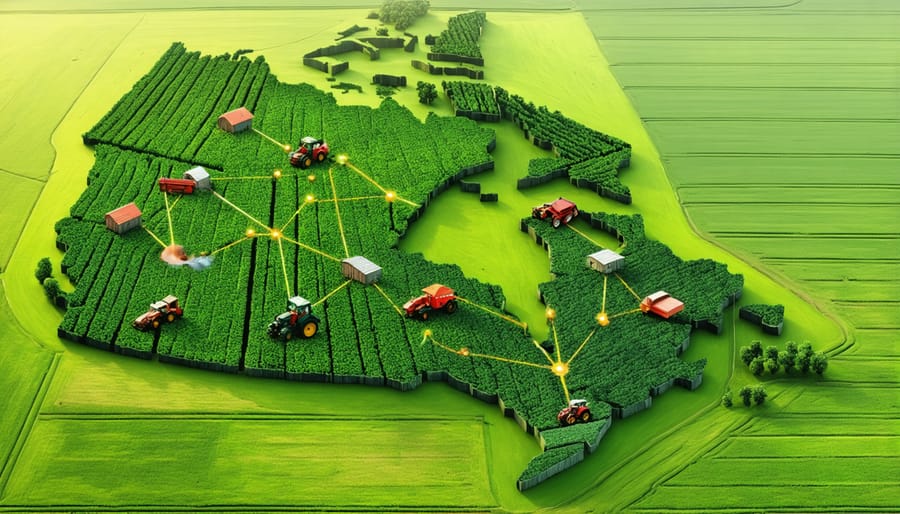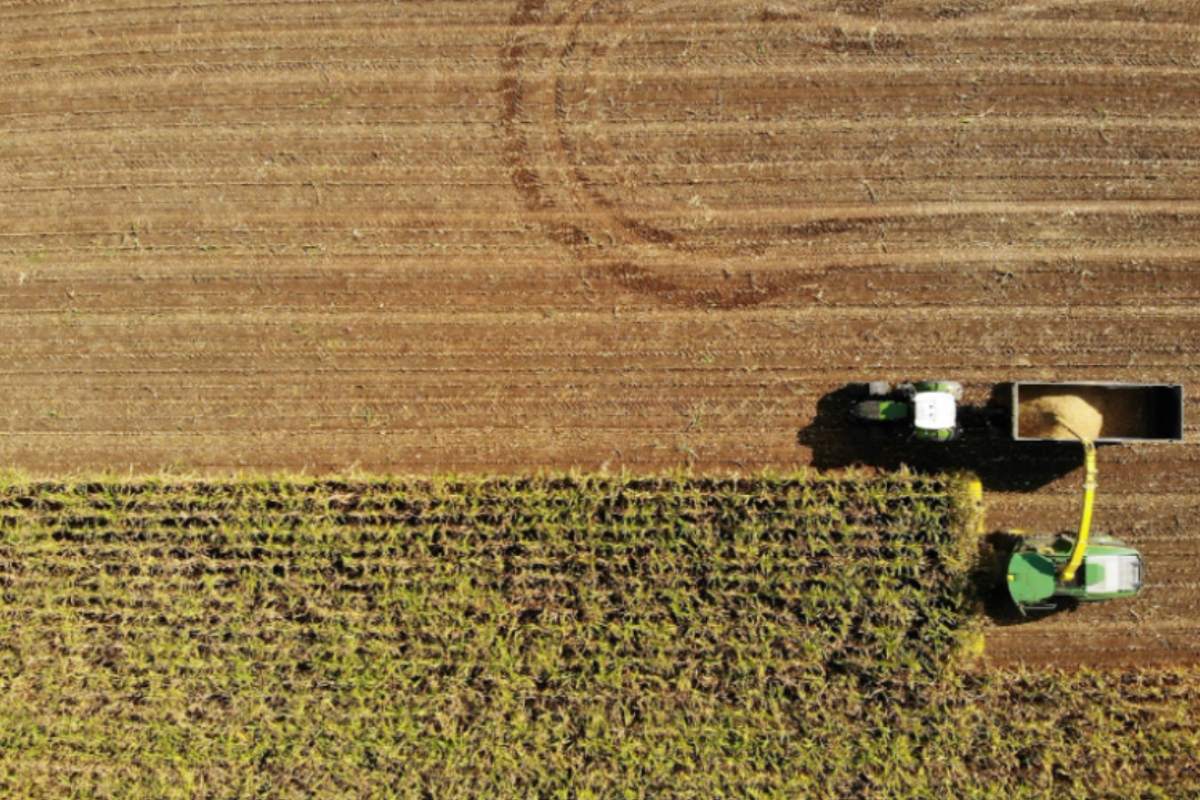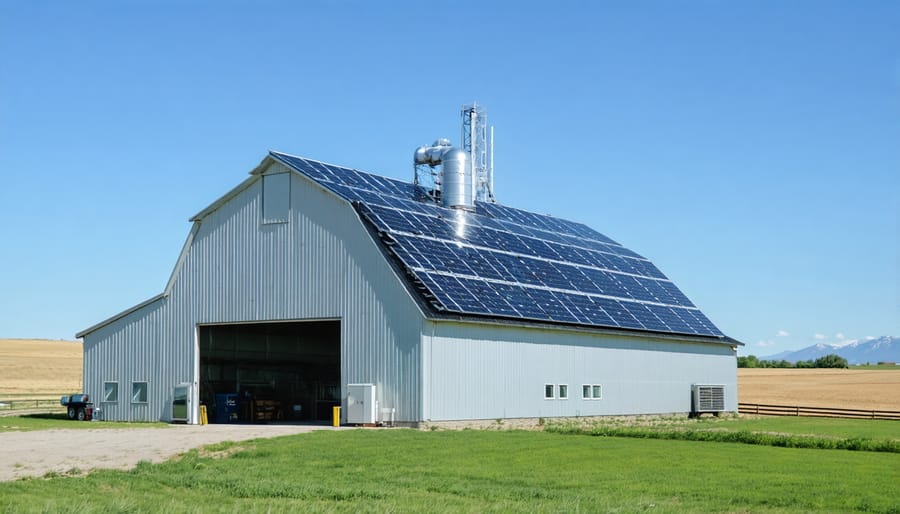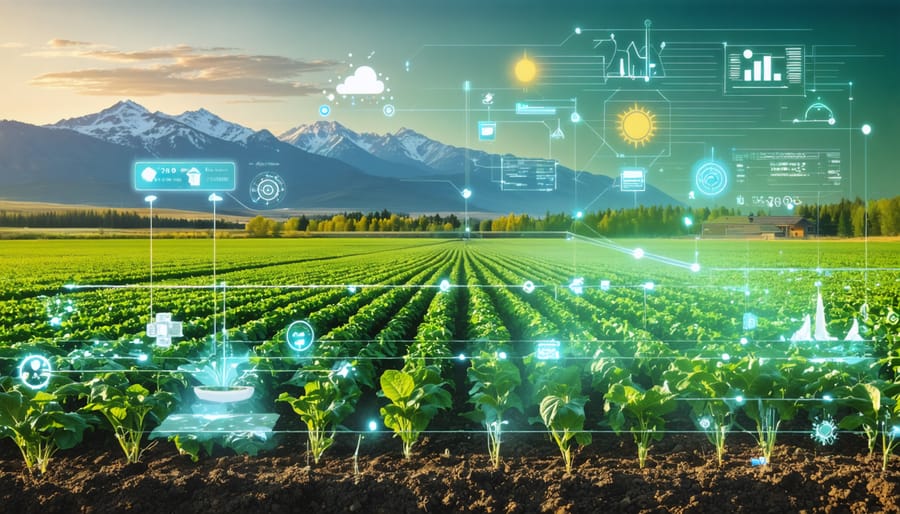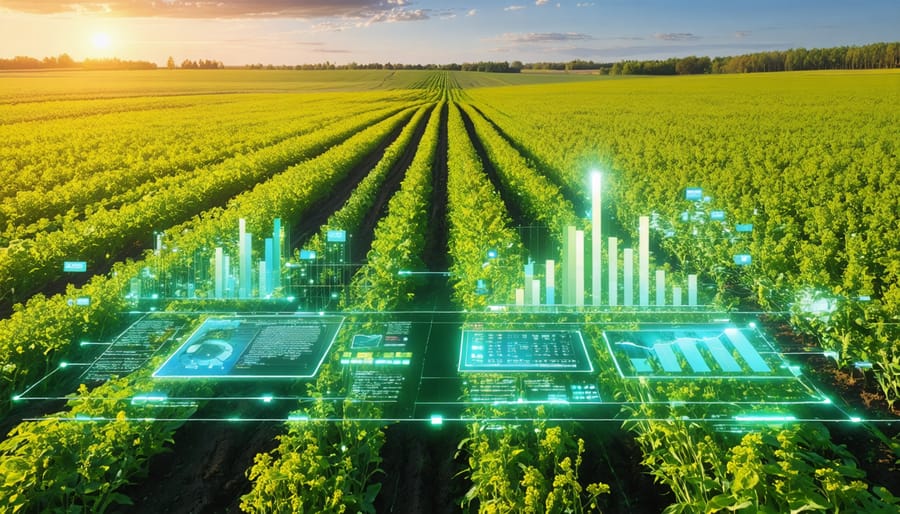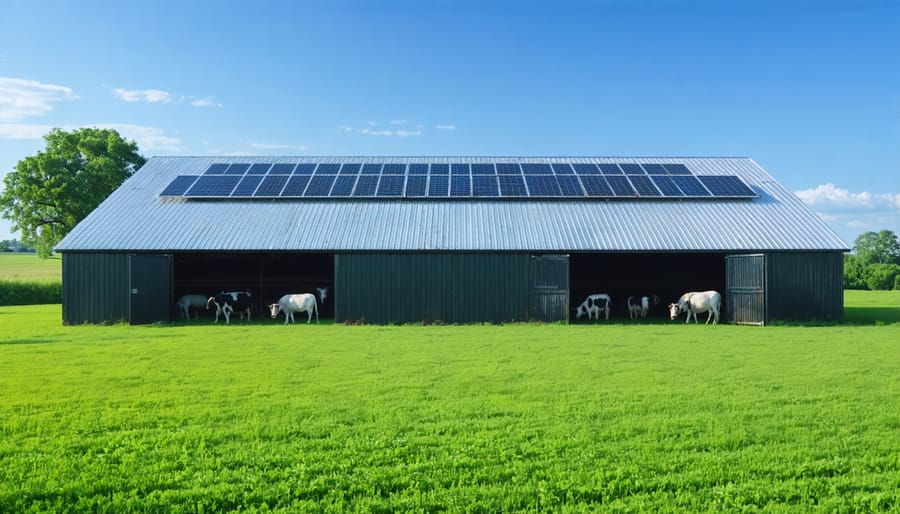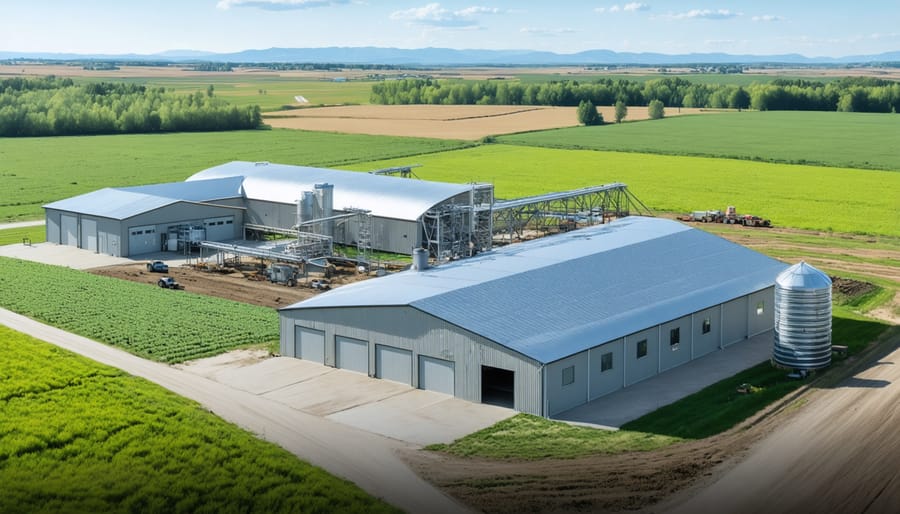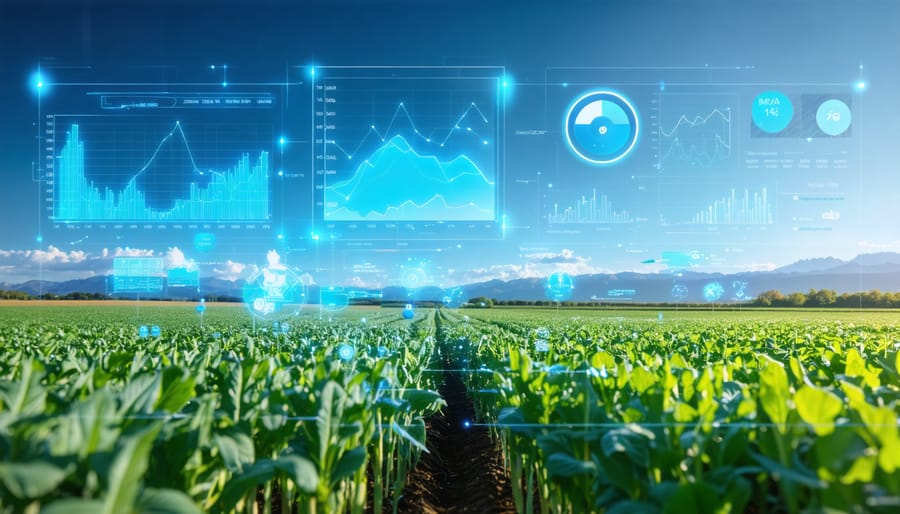Transform your farm’s water management with advanced irrigation systems that integrate precision sensors, automated controls, and real-time monitoring capabilities. Today’s smart water systems deliver up to 40% water savings while maximizing crop yields through targeted distribution and sustainable farming practices.
Canadian farmers are revolutionizing their operations with these intelligent water solutions, particularly in water-stressed regions like Southern Alberta. These systems combine soil moisture sensors, weather monitoring stations, and automated irrigation schedules to deliver exactly what crops need, when they need it.
The integration of advanced water management technology represents more than just efficiency—it’s a fundamental shift in how we approach agricultural water use. With climate variability increasing and water resources becoming more precious, these systems offer precise control over one of farming’s most vital resources while supporting long-term sustainability goals.
Modern water systems now feature smartphone connectivity, allowing farmers to monitor and adjust irrigation patterns from anywhere, while artificial intelligence algorithms optimize water usage based on real-time field conditions and crop requirements. This technological evolution is helping Canadian agriculture stay competitive while preserving our precious water resources for future generations.
The Core Components of Modern Agricultural Water Systems
Smart Irrigation Controllers
Today’s modern irrigation systems are revolutionizing water management across Alberta’s farmlands through smart controllers that combine precision timing with real-time weather data. These intelligent systems automatically adjust watering schedules based on local weather conditions, soil moisture levels, and crop requirements.
Using advanced sensors and wireless connectivity, smart controllers can detect rainfall, measure soil moisture, and monitor evapotranspiration rates. When rain is forecasted or soil moisture levels are adequate, the system automatically skips scheduled irrigation cycles, preventing overwatering and conserving precious resources.
For Prairie farmers, these controllers offer significant advantages. Many local producers report water savings of 30-40% compared to traditional irrigation methods, while maintaining or improving crop yields. The systems can be managed remotely through smartphone apps, allowing farmers to monitor and adjust irrigation schedules from anywhere on their property.
Most smart controllers can be integrated with existing irrigation infrastructure, making them a practical upgrade for farms of all sizes. Local agricultural extension services offer guidance on selecting and implementing these systems, ensuring farmers can maximize their benefits while supporting sustainable water management practices.

Soil Moisture Sensors and Monitoring
Modern farming success relies heavily on precise soil moisture monitoring technology, which has become increasingly sophisticated and accessible to Canadian farmers. These advanced sensors provide real-time data about soil moisture levels at various depths, helping farmers make informed irrigation decisions.
Popular options include capacitive sensors, which measure water content through electrical charges, and tensiometers that directly measure soil water tension. Many Alberta farmers have found success with wireless sensor networks that transmit data directly to their smartphones or farm management systems, allowing them to monitor multiple field locations simultaneously.
These sensors typically measure moisture levels every 15-30 minutes, with data accuracy within 2-3% of actual values. When properly calibrated, they can help reduce water usage by 20-30% while maintaining or improving crop yields. The systems are particularly valuable during critical growth stages and can be integrated with automated irrigation controllers for optimal water distribution.
For best results, experts recommend installing sensors at different soil depths (typically 15 cm, 30 cm, and 60 cm) to understand moisture distribution throughout the root zone.
Water Conservation Technologies in Action
Drip Irrigation Innovation
Modern drip irrigation systems have revolutionized water management in Canadian agriculture, offering precision and efficiency that traditional methods simply can’t match. These systems deliver water directly to plant roots through a network of tubes and emitters, reducing water waste by up to 70% compared to conventional irrigation methods.
Recent innovations in drip technology have brought smart features to the field. Pressure-compensating emitters now ensure consistent water flow across varying terrain, particularly beneficial for Alberta’s diverse topography. Soil moisture sensors and weather monitoring stations work together with automated controls to deliver water only when and where crops need it.
Many Alberta farmers have reported significant improvements after upgrading to modern drip systems. Dave Peterson, a third-generation farmer near Lethbridge, shared that his water usage decreased by 40% while crop yields increased by 25% after implementing a smart drip system on his vegetable operation.
Anti-clog technology has also advanced considerably, with self-cleaning emitters and filters that maintain system efficiency even in areas with high mineral content in water. The integration of UV-resistant materials has extended system longevity, making these installations more cost-effective over time.
For smaller operations, modular drip systems now offer scalable solutions that can grow with your farm. These systems can be easily modified or expanded, providing flexibility for changing crop patterns or growing operations.
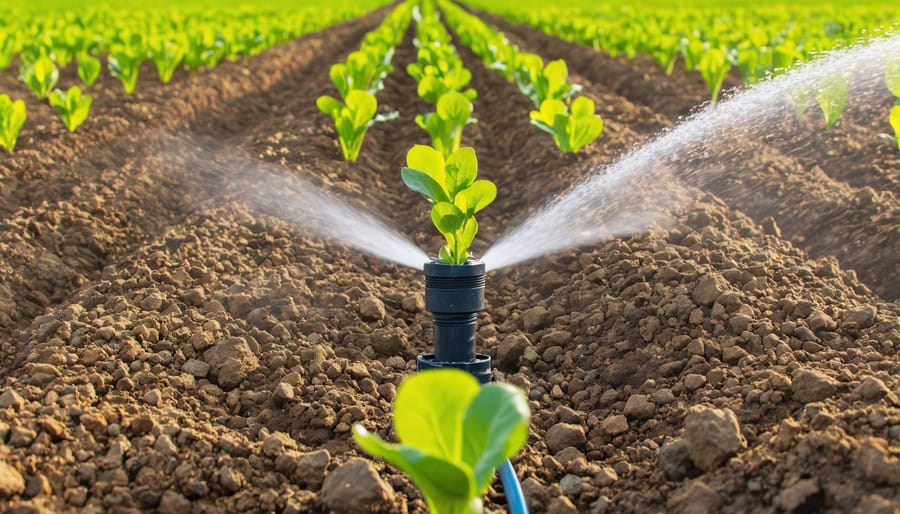
Water Recycling Solutions
In Alberta’s agricultural landscape, water recycling solutions have become increasingly vital for sustainable farming operations. These systems capture, treat, and reuse water efficiently, helping farmers maintain productivity while conserving this precious resource.
A typical water recycling setup includes collection points for rainwater and irrigation runoff, coupled with filtration systems that remove sediments and impurities. Many Alberta farmers have implemented retention ponds that serve as natural filtration systems while providing wildlife habitat. These ponds can store thousands of litres of water for future use during dry periods.
Treatment systems vary based on intended use, but commonly include UV sterilization and biological filtration. For greenhouse operations, advanced hydroponic systems can recycle up to 95% of water used, significantly reducing consumption. Some innovative farms in Southern Alberta have integrated constructed wetlands into their recycling systems, using natural processes to purify water while creating additional environmental benefits.
“Since installing our water recycling system, we’ve reduced our water usage by 40%,” shares Dave Thompson, a third-generation farmer near Lethbridge. “The initial investment pays for itself through water savings and improved crop health.”
Storage solutions range from underground tanks to above-ground reservoirs, with smart monitoring systems that track water quality and usage patterns. These systems can be scaled to suit operations of any size, from small family farms to large agricultural enterprises.
Data-Driven Water Management
Remote Monitoring Systems
Modern digital monitoring systems have revolutionized how we manage agricultural water systems across Alberta and beyond. These smart systems use sensors and automated data collection to provide real-time insights into water usage, soil moisture levels, and system performance. Many local farmers have found that remote monitoring saves both time and resources by eliminating the need for manual checks.
Using smartphone apps or desktop interfaces, you can track water flow rates, pressure levels, and system status from anywhere with internet connectivity. The systems send instant alerts if they detect issues like leaks, pressure drops, or equipment malfunctions, allowing for quick response times and preventing costly water waste.
Several Alberta farmers have reported up to 30% reduction in water consumption after implementing remote monitoring. For example, Sarah Thompson, who runs a 400-hectare operation near Lethbridge, uses soil moisture sensors connected to her monitoring system to optimize irrigation scheduling based on real-time data.
These systems also maintain detailed records of water usage patterns, helping with compliance reporting and long-term planning. Many units can be integrated with weather forecasting data to automatically adjust watering schedules, ensuring optimal water use efficiency while maintaining crop health. The initial investment typically pays for itself within two to three growing seasons through reduced labour costs and water savings.
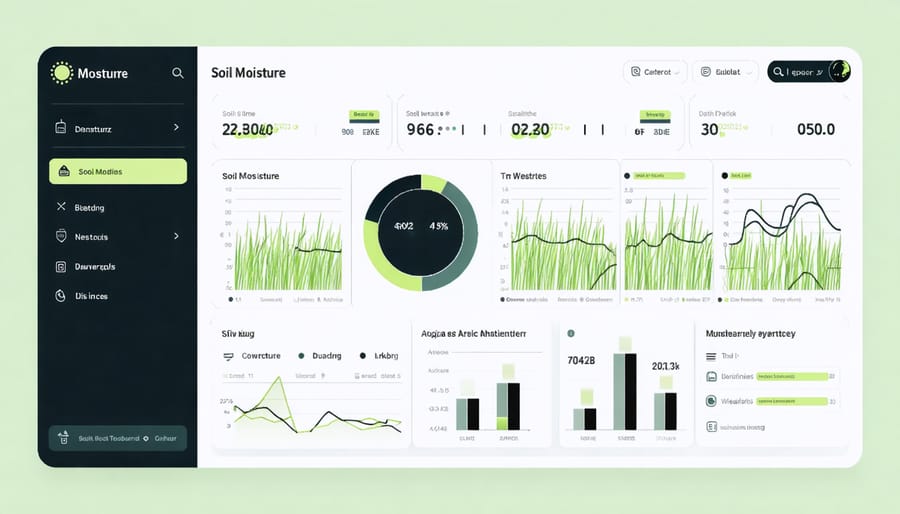
Predictive Analytics for Water Usage
Modern farming operations are increasingly turning to agricultural data analytics to make informed decisions about water usage. By collecting and analyzing data from soil moisture sensors, weather stations, and smart meters, farmers can predict water requirements with remarkable accuracy. In Alberta, where water conservation is crucial, these predictive systems have helped reduce water consumption by up to 30% while maintaining optimal crop yields.
The system works by combining historical water usage patterns with real-time data from your field sensors. Advanced algorithms process this information to forecast water needs for the next 7-14 days, allowing you to adjust irrigation schedules proactively. For instance, if the system predicts heavy rainfall, it automatically adjusts your irrigation schedule to prevent overwatering.
Many Alberta farmers are now using mobile apps that provide daily recommendations based on these predictions. The apps can alert you when specific fields need attention and suggest the best times for irrigation based on factors like evaporation rates and crop growth stages. This data-driven approach not only conserves water but also helps reduce energy costs associated with pumping and distribution.
Real-time monitoring combined with predictive analytics ensures you’re always one step ahead in managing your water resources efficiently while maintaining optimal growing conditions for your crops.
Implementation Success Stories
The Smith family farm in Lethbridge County stands as a shining example of advanced water system implementation. After installing a precision irrigation system in 2019, they reduced their water consumption by 35% while increasing crop yields by 22%. “The technology paid for itself within two growing seasons,” says Sarah Smith, who manages the 1,200-hectare operation.
In Red Deer County, the Peterson Brothers’ dairy operation revolutionized their water management through an integrated monitoring system. Their setup combines soil moisture sensors with weather data to optimize irrigation scheduling. “We’re saving approximately 400,000 litres of water annually,” reports Mark Peterson. “Plus, our energy costs have dropped significantly since we’re only irrigating when necessary.”
The Mountain View Hutterite Colony near Cardston demonstrates how advanced water systems can benefit larger agricultural operations. Their implementation of a solar-powered drip irrigation system across 800 hectares of vegetable crops has resulted in 40% water savings and a remarkable 28% increase in produce quality. Colony manager David Hofer notes, “The precision of the system means we’re not just saving water – we’re delivering exactly what each crop needs, when it needs it.”
Perhaps most impressive is the cooperative effort in Wheatland County, where six neighboring farms joined forces to implement a shared smart water management system. This collaborative approach allowed them to split costs while maximizing efficiency across their combined 3,000 hectares. The project, completed in 2021, has already shown promising results with a collective water saving of 45% compared to traditional methods.
Small-scale success is equally noteworthy. The Chen family’s 40-hectare market garden near Brooks adopted a mobile app-controlled irrigation system, allowing them to manage water delivery remotely. “Being able to adjust our irrigation from anywhere has transformed how we operate,” explains Lisa Chen. “We’ve cut our response time to weather changes from hours to minutes.”
These success stories highlight how advanced water systems are not just theoretical improvements but practical solutions delivering real results for Alberta farmers. The common thread among these implementations is careful planning, willingness to adapt, and a clear focus on long-term sustainability.
Economic Benefits and ROI
Investing in advanced water systems yields significant returns for Canadian farmers, with many Alberta producers reporting payback periods of just 2-3 growing seasons. Initial costs typically range from $800 to $1,500 per hectare, but the long-term savings and increased productivity make it a sound investment.
According to a recent study by the Alberta Agriculture and Forestry department, farms using advanced water systems saw an average 30% reduction in water consumption while maintaining or increasing crop yields. This translates to annual savings of approximately $75-100 per hectare in water costs alone.
Beyond direct water savings, these systems deliver multiple financial benefits. Farmers report 15-25% increases in crop yields due to precise irrigation timing and optimal moisture levels. Labour costs typically decrease by 40-50% as automation reduces the need for manual monitoring and adjustments.
Energy savings are another significant advantage, with modern systems using up to 35% less power than traditional irrigation methods. Many farmers have accessed government grants and rebates through Canada’s Agricultural Clean Technology Program, reducing initial implementation costs by 25-40%.
Real-world success stories include the Matthews family farm near Lethbridge, which recovered their $45,000 investment within two seasons through combined water and labour savings, plus increased potato yields. Their experience demonstrates how advanced water systems can transform farm operations while supporting environmental stewardship.
As we look to the future of agriculture in Alberta and across Canada, advanced water systems are becoming increasingly vital for sustainable farming practices. The integration of smart irrigation technologies, precision monitoring, and automated control systems has already demonstrated significant benefits for our farming communities, including water conservation rates of up to 30% and improved crop yields across various soil conditions.
The success stories from local farmers who have implemented these systems show that the initial investment is often recovered within two to three growing seasons through reduced operational costs and increased productivity. As climate patterns continue to evolve, these systems will become even more crucial for maintaining consistent crop production and protecting our valuable water resources.
Looking ahead, we can expect to see further innovations in water management technology, including artificial intelligence-driven irrigation scheduling and enhanced weather prediction integration. For Alberta’s agricultural community, staying informed about these advancements and working together to share knowledge and experiences will be key to building a resilient and sustainable farming future.
The path forward is clear: by embracing advanced water systems today, we’re not just improving our current operations – we’re securing the future of Canadian agriculture for generations to come.

